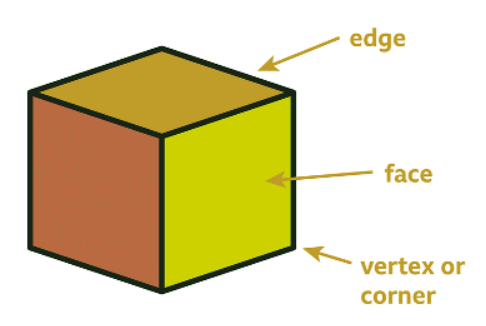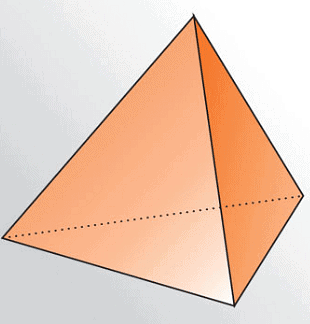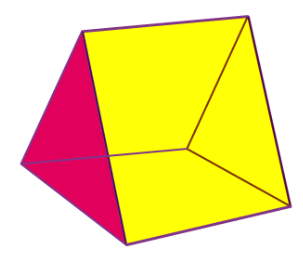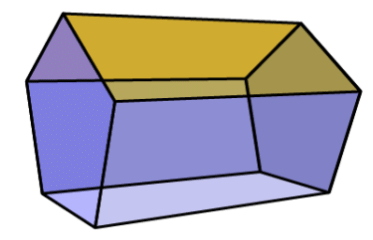Recognise and describe 3D shapes | Year 3 Mathematics PDF Download
Properties of 3D Shapes
3D shapes have three dimensions - length, width and depth. 3D shapes have different properties:

- Faces: Faces are flat surfaces on a 3D shape. For instance, a cube comprises 6 faces.
- Edges: Edges are where two faces meet. A cube, for example, has 12 edges.
- Vertices: Vertices are corners where edges meet. In the case of a cube, it has 8 vertices.
Types of 3D Shapes
Let's explore some common 3D shapes and their characteristics:
Sphere

A sphere is a three-dimensional shape that is perfectly round like a ball.
A sphere has:
- 1 curved face
- No vertices
- No edges
Cube
 A cube is a three-dimensional shape with equal sides and angles.
A cube is a three-dimensional shape with equal sides and angles.
A cube has:
- 6 faces (all shaped like squares)
- 12 edges
- 8 vertices
Cuboid
 A cuboid is a three-dimensional shape that resembles a box or a rectangular prism.
A cuboid is a three-dimensional shape that resembles a box or a rectangular prism.
A cuboid has:
- 6 faces (all rectangular, or a mix of rectangles and squares)
- 12 edges
- 8 vertices
Square-based Pyramid

A square-based pyramid resembles the pyramids in Egypt, featuring a square face at the bottom.
- 5 faces: 1 square and 4 triangular
- 8 edges
- 5 vertices
Cone
 Cones are seen in shapes like ice cream cones, traffic cones, and birthday hats.
Cones are seen in shapes like ice cream cones, traffic cones, and birthday hats.
- 2 faces: 1 circular at the base and 1 curved
- 1 edge around the base
- 1 vertex
Cylinder

Cylinders resemble tubes and toilet rolls in shape.
- 3 faces: 2 circular and 1 curved
- 2 edges
- 0 vertices
Tetrahedron

A tetrahedron is a triangular-based pyramid with the following characteristics:
- 4 faces, all of which are triangular
- 6 edges
- 4 vertices
Triangular Prism
 Another interesting shape is the triangular prism, which includes:
Another interesting shape is the triangular prism, which includes:
- 5 faces (2 triangular and 3 rectangular)
- 9 edges
- 6 vertices
Prisms

- Prisms are characterized by having two ends that are the same shape and size.
- They maintain the same cross-section throughout their length.
- Cutting through a prism at any point reveals the same 2D shape as at either end.
|
68 videos|71 docs|14 tests
|
FAQs on Recognise and describe 3D shapes - Year 3 Mathematics
| 1. What are some examples of 3D shapes commonly used in UK schools? |  |
| 2. How are 3D shapes different from 2D shapes? |  |
| 3. How can students recognize 3D shapes in real-life objects? |  |
| 4. How can students describe the properties of 3D shapes? |  |
| 5. Why is it important for students to learn about 3D shapes in school? |  |




















